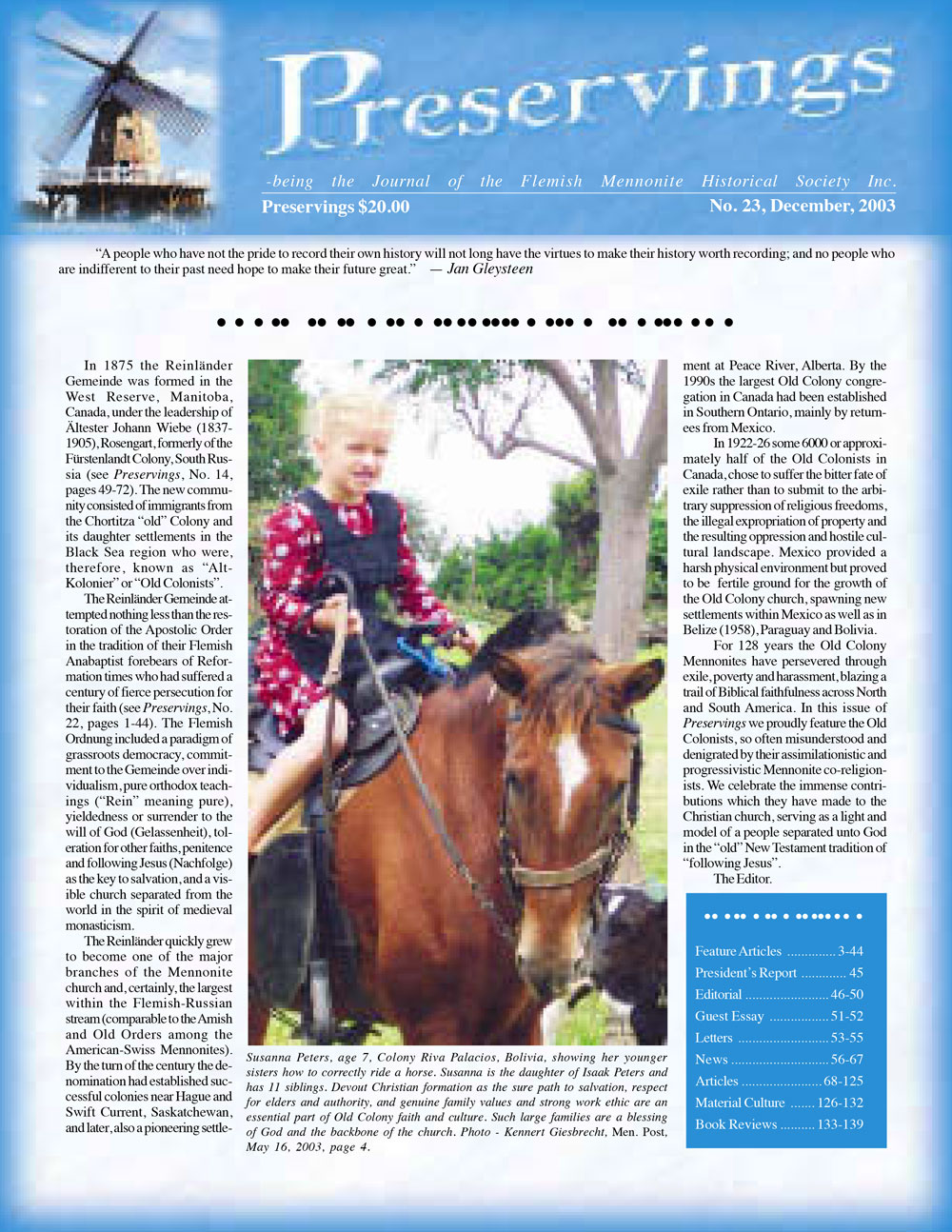FROM THIS ISSUE
In this issue we are taken the length and breadth of the Dutch-North German-Russian Mennonite scattering across the world and over time. Sjouke Voolstra’s article about early Dutch conservatives offers rare and interesting insights that point to some conservative ways still practiced that have their origins in the 17th and 18th centuries. Voolstra died in a sailing accident in 2004 and we are indebted to Lydia Penner of the Netherlands for translating this article. The difficult times during the Soviet period were the subject of Nataly Venger’s presentation at the Mennonite Heritage Centre in the spring of 2007. Venger offers an interesting perspective on the period, suggesting that if examined in the context of the Soviet regime and its time, Mennonites were remarkably successful achieving things for themselves that others could not. To be sure that ultimately also ended, but hers is an interesting and refreshing perspective. Titus Guenther’s article not only helps us know Ältester Martin C. Friesen but also the history of the migration to Paraguay. Henry Schapansky sheds light on how estates in Russia came to be and how familial connections sustained and expanded them. Ralph Friesen’s article explores a difficult aspect of the human condition, ‘sexual sin’ and how the Kleine Gemeinde dealt with specific cases. Bruce Wiebe’s article brings to light new research about the securing of timber for the early settlers on the West Reserve across the border in North Dakota, while Lawrence Klippenstein adds another biographical piece to the rich contribution made by the Wiebes, in this case Heinrich Wiebe, to both East and West Reserve life. Royden Loewen’s article acknowledges the 50th anniversary of Mennonite presence in Belize. Roy shows us how Spanish Lookout settlers maintained earlier traditions and developed news ways of expressing their conservative orientation in a tropical environment. Change is always part of history and Adolf Ens uses John Dyck’s earlier research to give us a picture of early Mennonites who pursued higher education, while Jesse Hofer challenges the idea that Hutterites do not have a mission orientation. As always, the personal writings of our people tell their own stories. The memoirs of P.A. Elias offer an interesting window into early Bergthaler-Old Colony relations while the everyday life of a farm woman highlight the journal of Maria Voth. Altester Peter R. Dueck and the 1918 flu epidemic offer our first hint at Glen Klassen and Kimberly Penner’s research on how that epidemic affected Mennonite churches. Finally, a number of new books have been reviewed by generous contributors. It is indeed a rich potpourri.

Past Issues
VIEW ALL PAST ISSUESHave content or research you would like to share with us? Submit your article to our team.
How To Submit




